Oil pressure is always a concern to anyone who flies a powered plane. Everyone knows that if your oil pressure drops to zero, your flight will be ending soon, whether you want it to or not. But there is much to understand about oil pressure beyond knowing you need some. In this article we’ll take a look at the basic oil system of a Lycoming-type engine and what can make oil pressure deviate from the green range on your oil pressure gauge. Please note that there are fundamental differences between the Lycoming oil system and the Rotax system.
Key oil system components for a Lycoming engine: ➊ plug for return line from oil cooler, ➋ crankcase vent fitting, ➌ oil temperature sensor location, ➍ oil filter, ➎ plug for oil pressure sensor, ➏ oil pressure relief valve, ➐ plug for sump screen, ➑ plug for feed line to oil cooler.
The Oil System
The oil system begins in the sump beneath the crankshaft with a maximum of eight quarts in a typical four-cylinder engine and a minimum level of 2.5 quarts. The oil first flows through a sump screen on its way to the pump. The screen’s job is to trap large pieces of whatever junk might be in the sump. A clean screen is a happy screen. Anything else requires immediate investigation to determine the source of the deleterious matter. Your sump screen should be checked at least once a year—at every oil change is even better.
Once the oil has passed through the sump screen, it flows directly into the oil pump located at the rear of the engine in the accessory housing. Two gears turning against each other and driven by the crankshaft bring oil pressure up to over 100 psi. From there it passes into the vernatherm body, where it is either routed into the oil cooler or sent directly to a bypass valve that sends as much oil to the filter as it can handle (typically less than 100%). After the oil filter has sifted out all but the smallest particles, the oil goes to the engine to lubricate and help cool the various bearings and other moving parts.
Oil system components for a Lycoming with constant-speed prop: ➊ prop governor, ➋ oil line to prop, ➌ plug for sump screen, ➍ plug for drain to crankcase, ➎ dipstick/filler tube plug.
Oil pressure is measured at the back of the engine in the accessory case by tapping into a 1/8-inch NPT hole located in the upper part of the case on the passenger side. While it is possible to tap into the oil system and measure pressure at other locations, this is the spot that Lycoming has prescribed and upon which their oil pressure guidelines are based. Oil temperature is measured by placing a probe in a specially provided hole above the vernatherm near where the oil filter attaches to the accessory case. No other location provides readings that will correlate with the guidance provided by Lycoming.
In an engine that is set up to support a constant-speed propeller, pressurized oil is routed through the prop governor, also located on the accessory case, and through an external oil line to the front of the engine where it is fed into the front end of the hollow crankshaft and into the propeller hub. In planes without a feathering prop, higher oil pressure increases the pitch (decreases rpm) of the prop. Thus, when oil pressure drops to zero, the prop will go to maximum rpm or flat pitch.
Plugs on either side of the front of the crankcase can be tapped to detect oil pressure loss through the system. These are not to be used for the primary source of oil pressure information.
Low Oil Pressure
Lycoming recommends having oil pressure between 55 and 95 psi for normal operation. Idling oil pressure should be at least 25 psi, and maximum takeoff oil pressure is listed as 115 psi in the Lycoming operator’s manual. If your oil pressure falls outside of that range, you need to find out why, and usually very quickly. Of course, other engine manufacturers will have their own limits. Be sure to know what they are for your engine.
Low oil pressure can have many causes. When troubleshooting, my rule is to start with the cheap and easy stuff first, and work your way up to the difficult and expensive things. Also, start with the common and straightforward as opposed to getting sidetracked with the complex and less common. Metaphorically, if you hear hoofbeats, think horses—not zebras.
Oil pressure relief valve on a Lycoming O-360 engine. This one is adjustable, but some aren’t. Most operators will never need to make any changes to the oil pressure relief valve.
With that in mind, first check to be sure you have sufficient oil. Four-cylinder Lycoming engines need at least 2.5 quarts to work properly. Ideally you should have more like six or seven quarts before you begin a flight. Also make sure that you are using the correct type and weight of oil. Check your engine maker’s literature for the correct oil based on the current temperature.
Related to the oil level problem is excessive oil consumption. You may start out with enough oil, but in extreme cases you could loose enough oil during a long flight to reduce the oil quantity to an unsafe level. Badly worn cylinders and rings are the most likely cause of this. Badly worn valve guides can also lead to excessive oil consumption. Usually this much oil consumption will show up on the belly of the airplane, but crankcase vents that tie directly into the exhaust system can mask this. For this and other reasons, I am not a fan of these setups.
The oil pressure gauge can be the source of a low oil pressure reading. A sender that has been mounted directly to the engine instead of remotely on the firewall can get shaken to destruction by engine vibration. A loose or broken wire will also cause trouble that may result in an indication of zero oil pressure. Modern EFIS systems are particularly vulnerable to improper readings caused by poor connections, especially poor ground connections. Make sure all of your wiring is in good shape, including engine bonding straps, before you dig too deeply into the engine. It should be noted that taking the oil pressure reading from any other point than the prescribed location will give incorrect oil pressure readings.
An engine that has been running well but suddenly loses 20 to 30 pounds of oil pressure is likely suffering from debris in the oil pressure relief valve. A large piece of debris may cause oil pressure to drop to zero at idle. This needs to be fixed quickly, but it is not a difficult or expensive repair in most cases.
The oil pump is a very simple set of two gears that turn against each other to pressurize the oil system. Some old engines may have aluminum or sintered iron gears in the oil pump. These should be replaced as per Lycoming Service Bulletin 524.
Mechanical causes of low oil pressure can often be traced to problems with the oil pressure relief valve, ranging from debris in the valve to improper adjustment. Dirt or metal particles can get lodged in the valve or embedded in the valve seat, holding the valve open enough to allow too much oil to get bypassed back into the sump. Usually removal and cleaning will solve the problem, but you may have to repair the valve seat if debris is embedded in the case material. If this is the case, refer to Lycoming Service Instruction 1172 for the proper repair procedure. Some adjustment to oil pressure can be made by changing the spring in the valve or adding washers under the spring. This can be useful to make minor adjustments in pressure, but if some internal engine problem is the cause of low oil pressure, this will only be a Band-Aid on the problem.
A small piece of debris in the seat of the oil pressure relief valve caused a significant drop in oil pressure in this engine. With the debris removed oil pressure went back to normal. (Photo: Tom Ford)
High oil temperature can cause pressure to drop, but probably more often, low oil pressure causes a problem inside the engine that leads to high oil temperature. These problems can get very ugly very quickly. If oil temperature is too high, look for obstructions in the oil cooler and lines, and in the airflow to the oil cooler. There is also an oil temperature bypass valve that regulates flow into the oil cooler that may need repair. Lycoming Service Instruction 1316 deals with this procedure. If you winterize your oil cooler to keep oil temperatures up in cold weather, be sure to remove it during warm weather. Oil temperature should be between 185 and 245 F, with a minimum of 100 for takeoff.
Another possible source of low oil pressure is an obstruction at the sump screen. Large amounts of debris or sludge can restrict the flow of oil into the pump at that point. Be especially wary after a field overhaul when silicone was used to seal the case halves. Excess silicone can come loose and block the sump or other oil passages. The way to prevent this is to use the proper sealing material and procedure when putting the engine back together. Hopefully, the problem can be solved by cleaning the sump screen.
This sump screen was badly clogged with debris, reducing the flow of oil to the pump and raising the questions, where did all of this junk come from, and how much longer was this engine going to keep running? (Photo: Vic Syracuse)
The last oil pressure problems are the ugly ones. Missing oil plugs in galleys or cracks in certain parts of the crankcase will reduce oil pressure. Unless these occur on the outside, in which vast quantities of oil will be flowing out of the engine, these problems can be hard to detect. Unfortunately, they almost always mean a teardown of the engine to solve the problem.
Excessive bearing clearances will also produce low oil pressure, which will require an engine overhaul to fix it. This is most often seen after a poor field overhaul where clearances are at the maximum or a little more. It is also possible to just wear out bearings, but it is not likely unless the engine has run out of oil. These engines will often have good oil pressure when cold but poor pressure when brought up to temperature. Oil pressure will also vary with engine rpm. If the variance gets to 40 psi or more, it is time to get worried.
Suddenly Low Oil Pressure
If your flight begins with normal oil pressure and then it suddenly drops a lot, maybe even to zero, there is a good chance that you have a bad problem. It could always be a gauge failure, but betting on that is not where the smart money will go. This is one of those “squawk 7700 and call Mayday!” kind of situations. Fly the plane. Reduce power if the engine is still running. Look for a place to land. Then make the radio call and adjust the transponder. After you have done that, it is time to more thoughtfully evaluate your situation if you are high enough to do so.
If oil is streaming across your windscreen, you know that your engine is not going to be there for you much longer. If it is still running and you are not on fire, it may be a good idea to try to keep it turning in case you need one last shot of power. Follow the emergency checklist for your plane.
If your engine is still running smoothly, and there is no evidence of a failure except a low oil pressure reading, you should still prepare for an emergency landing, but you will be able to be a little more selective on where you put it down. Do not assume that it is a failed gauge. Do not try to nurse it home on the assumption that it is just the gauge.
Suddenly High Oil Pressure
Suddenly high oil pressure is usually followed by suddenly low oil pressure, because the most likely cause is a bearing that has shifted and blocked an oil passage. That shift will invariably cause that bearing to fail fairly quickly. Unless you are really paying attention, you could easily miss the increase in pressure. However, if you do see it, that would be the time to pull back on the power in hopes of preventing even more damage to your engine.
A stuck or improperly adjusted oil pressure relief valve could cause high oil pressure, but that should be obvious from startup, not suddenly appear in an engine making normal oil pressure.
This Lycoming drawing shows the parts of both types of oil pressure relief valves—adjustable and fixed. Oil pressure can be adjusted by adding washers or changing the spring in the valve.
For most aviators, oil pressure problems will be very rare. Maintenance-induced problems will probably top the list of probable causes. The three best things you can do to avoid oil pressure problems are one, change your oil and filter regularly and keep your oil at the proper level at all times; two, avoid flying with oil and cylinder head temperatures that are too high or too low; and three, use a reputable shop for any major engine work that you are not well-equipped and trained to do, especially work involving splitting open the crankcase.

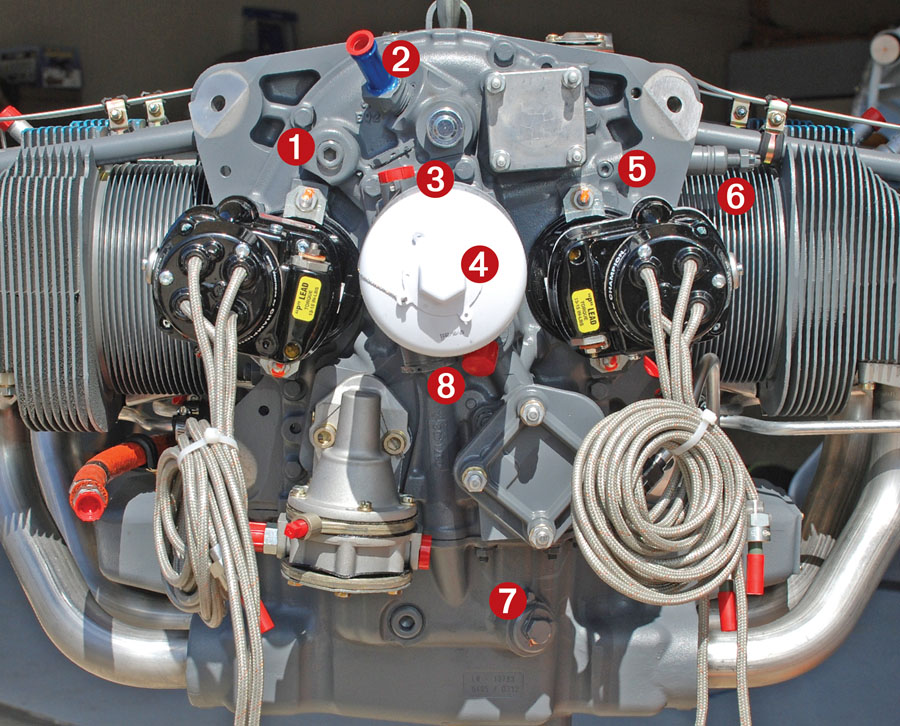
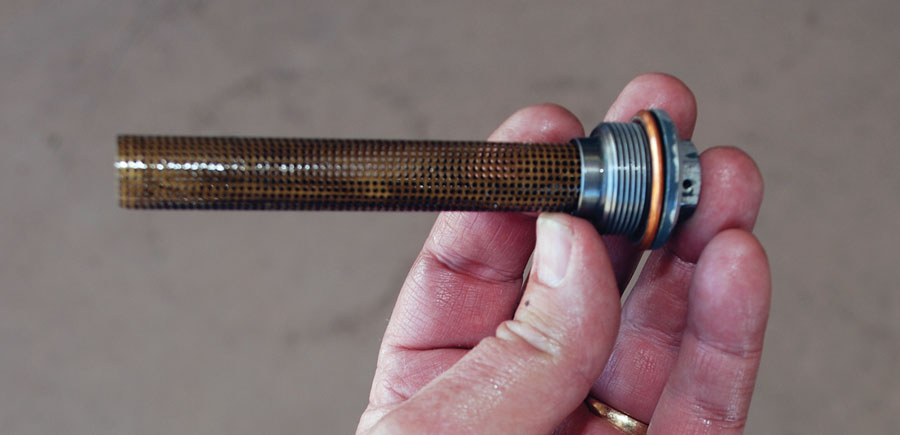
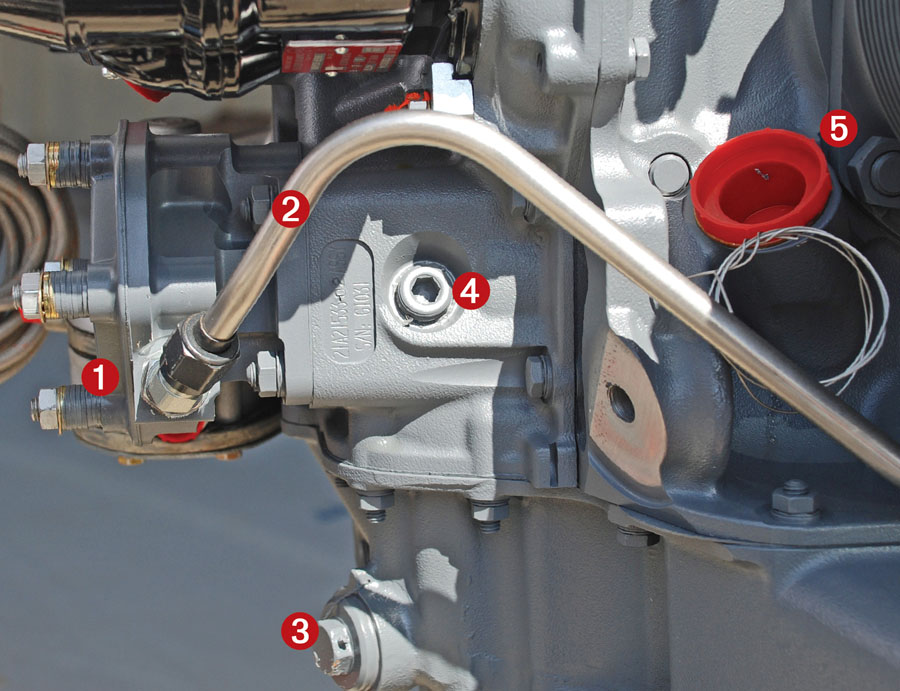
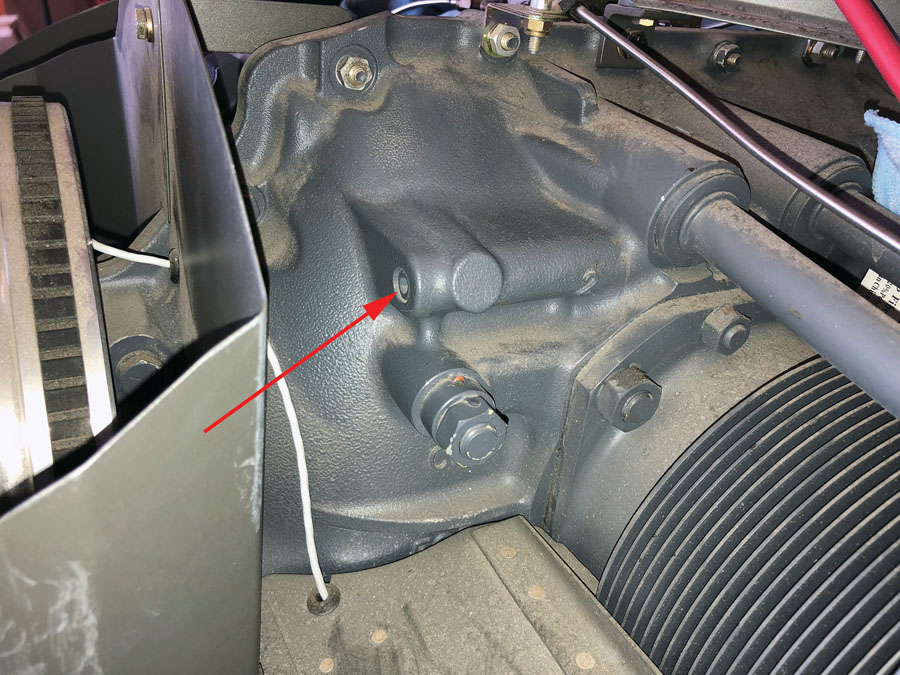
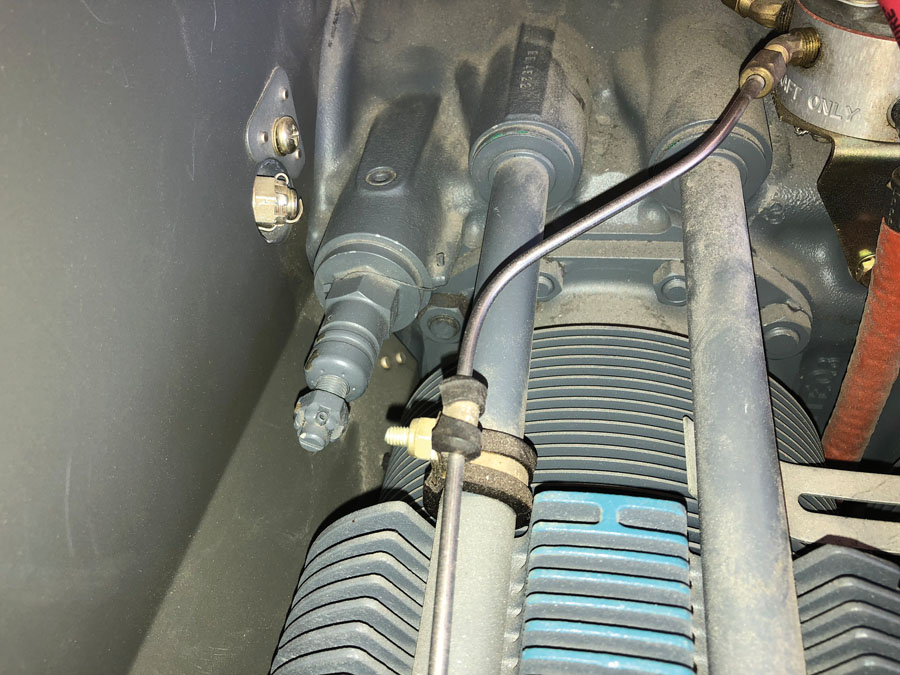
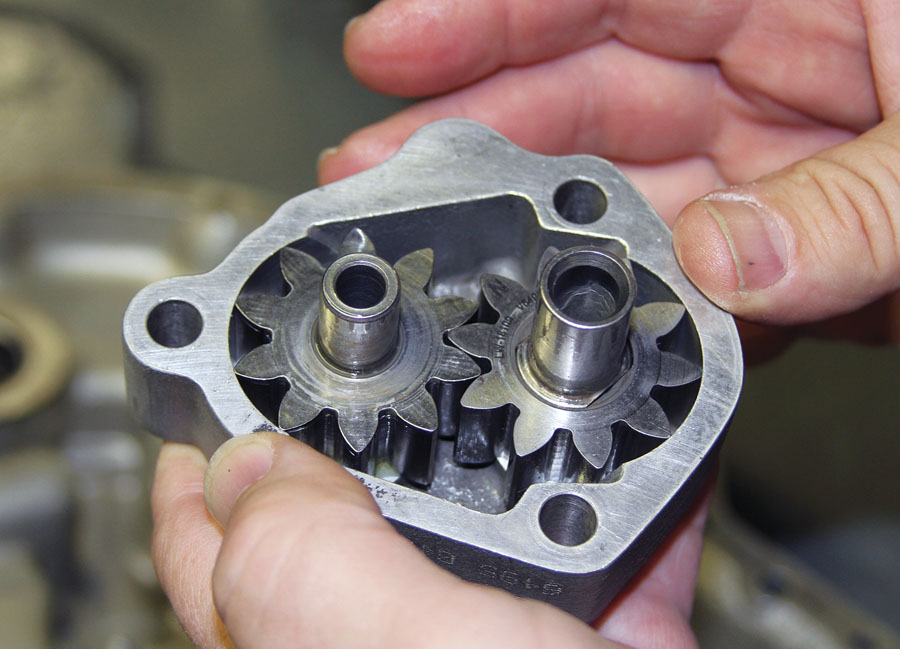
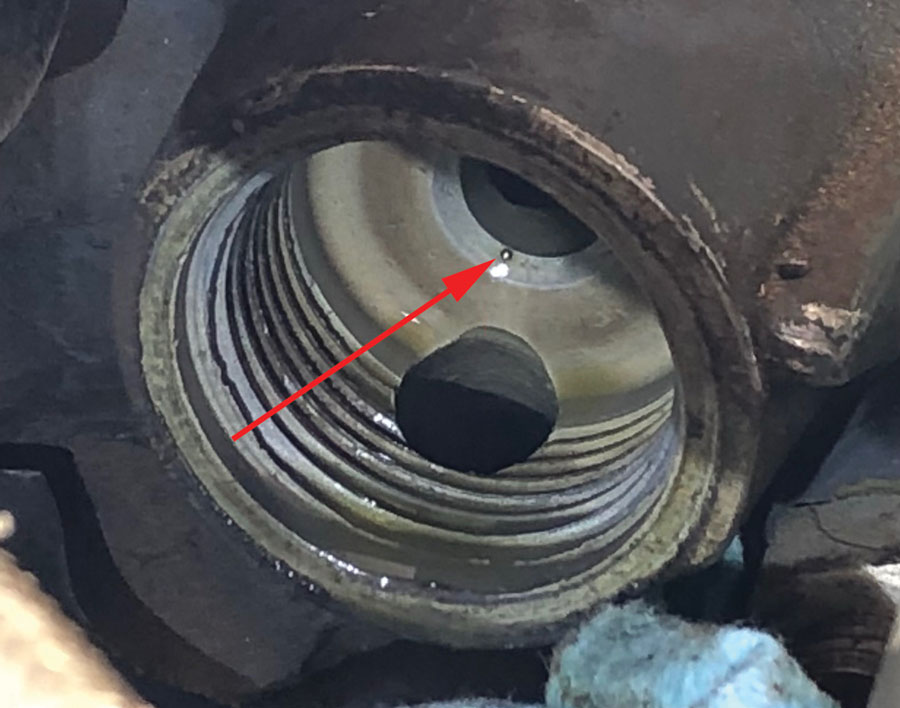
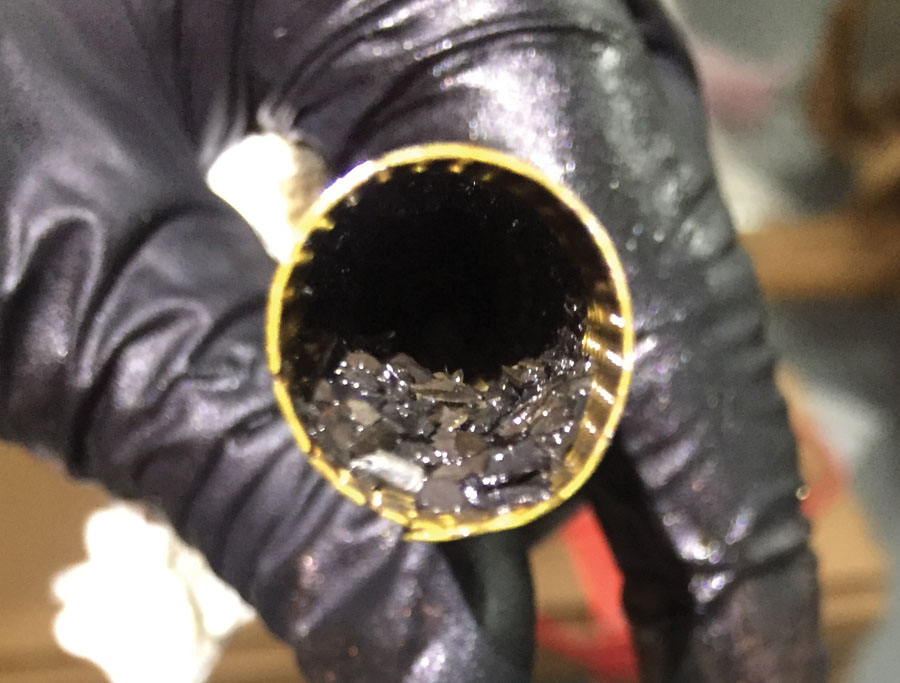



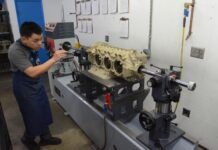

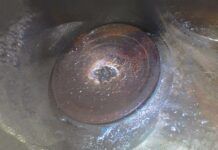


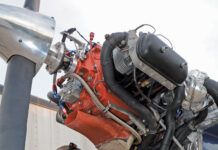
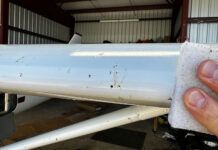
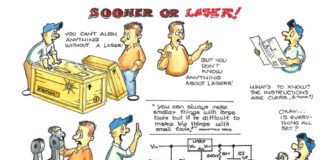

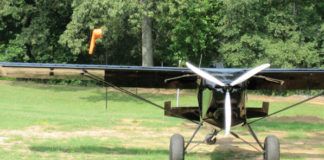
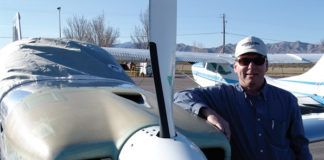
my brother just acquired a o 435-1 engine on an airboat the engine is mostly together has seam to be pretty good compression the problem there is no dip stick tube he says it isnt to be to be found can i request some information from someone where the filler hole/dip stick location would be I have looked all over the internet but cant find the information or a picture showing the location might be thank you for your help [email protected]